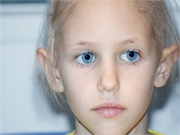Mortality risk increased at 5 years, 10 years among those with pediatric lymphomas, CNS tumors
WEDNESDAY, May 13, 2020 (HealthDay News) — For pediatric and adolescent and young adult (AYA) patients with specific cancers, continued exposure to fine particulate matter (PM2.5) is associated with later mortality, according to a study published online May 13 in Cancer, Epidemiology, Biomarkers & Prevention.
Judy Y. Ou, Ph.D., from the University of Utah in Salt Lake City, and colleagues followed 2,444 pediatric and 13,459 AYA patients (diagnosed during 1986 to 2015 at ages 0 to 14 and 15 to 39 years, respectively) from diagnosis to five and 10 years postdiagnosis, death, or emigration. During follow-up, the average monthly PM2.5 was measured by ZIP code.
The researchers observed an association between increases in PM2.5 per 5 µg/m³ and cancer mortality in pediatric lymphomas and central nervous system (CNS) tumors at both time points and for all-cause mortality in lymphoid leukemias (hazard ratio5-year = 1.32). Among AYAs, at both time points, PM2.5 per 5 µg/m³ was associated with cancer mortality in CNS tumors and carcinomas and with all-cause mortality for all AYA cancer types (hazard ratio5-year = 1.06). At both time points, PM2.5 ≥12 µg/m³ was associated with cancer mortality among breast and colorectal cancers. There was significant effect modification by stage, with the highest risk for local tumors.
“While improvements in detection and treatment are of great importance to reducing cancer mortality, understanding how continued exposure to pollutants with known carcinogenic effects such as PM2.5 is also important but largely unknown,” the authors write.
Copyright © 2020 HealthDay. All rights reserved.








